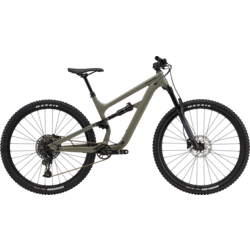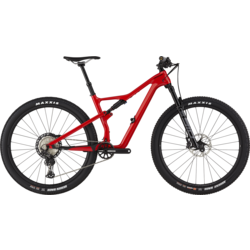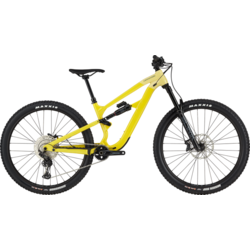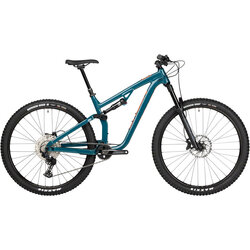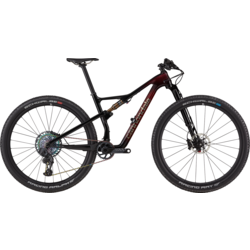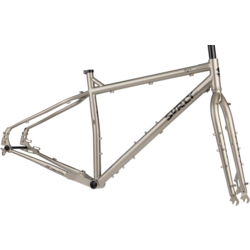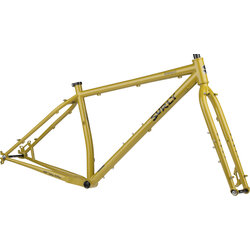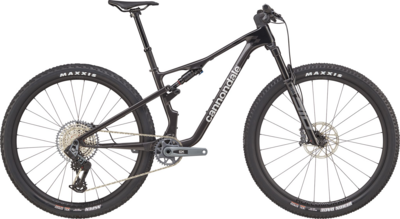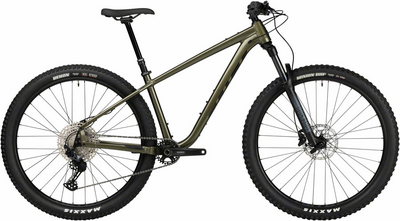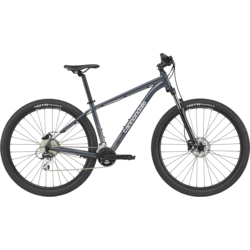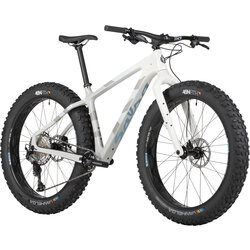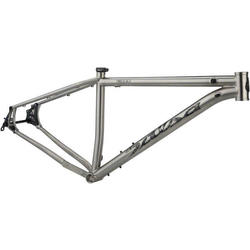How To Start Mountain Biking
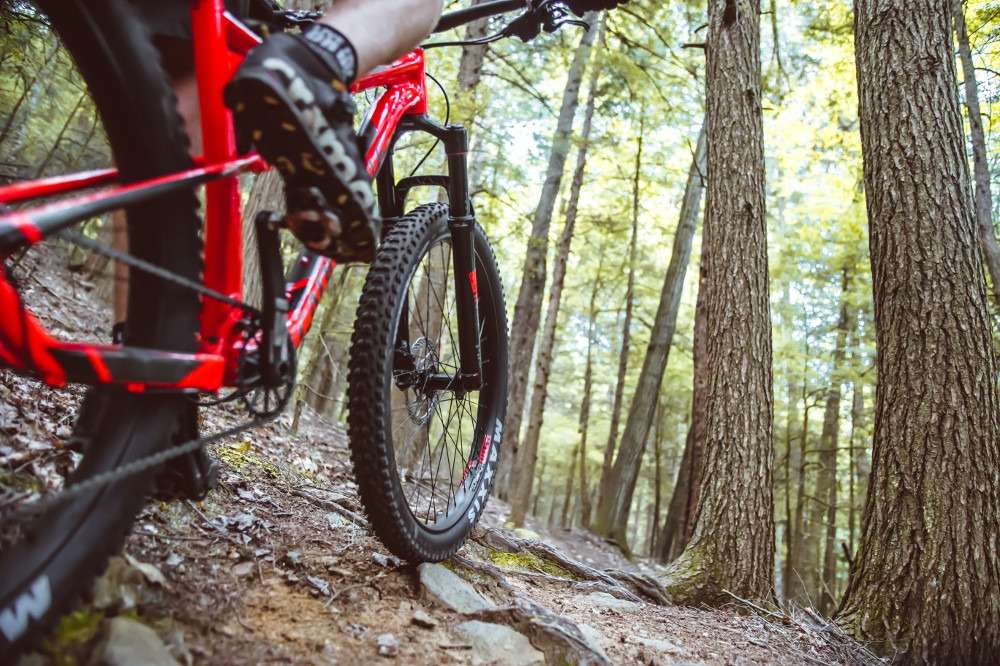
Before Hitting The Trails
So, you're looking to learn how start mountain biking?
Well my friend you've made a great decision!
Mountain biking is incredibly fun and it's great for fitness and mental well being.
Going off road with your bike makes you feel like a kid again, it always puts a smile on your face.
Riding over roots, rocks and dirt is both challenging and rewarding and leaves you with a real sense of accomplishment when your ride is done.
In order to get in the woods there's a few things you will need to give thought to, some are obvious and some are not.
We've outlined how to buy your first MTB and gear as well as how to have the most fun on your first mountain bike ride!
So, let's get started down the path to riding off-road shall we?
But before we do you'll need a few things...
#1 - A Reliable Mountain Or "Trail Bike" & Must Have Accessories
When you start looking into getting your first mountain bike there are a few things you'll need to think about in regards to the bike itself.
One of the first questions you'll need to ask yourself is what is your budget for a bike and some must have MTB accessories?
In today's market you can get a beginner mountain bike starting at about $600 although we suggest bumping that up a bit to the $700 to $1500 range.
Starting at around $700 you'll most likely get a disc brake equipped bike with an entry level drive-train and basic suspension fork.
The Trek Marlin 5 gets the wheels turning right at $719.99 with disc brakes, Shimano drivetrain and a starter front shock.
One of our favorites, the Marlin 7 clocks in at $1019.99 and gets an upgraded shock, 1x drive-train & hydraulic brakes.
See the entire Trek Marlin series here.
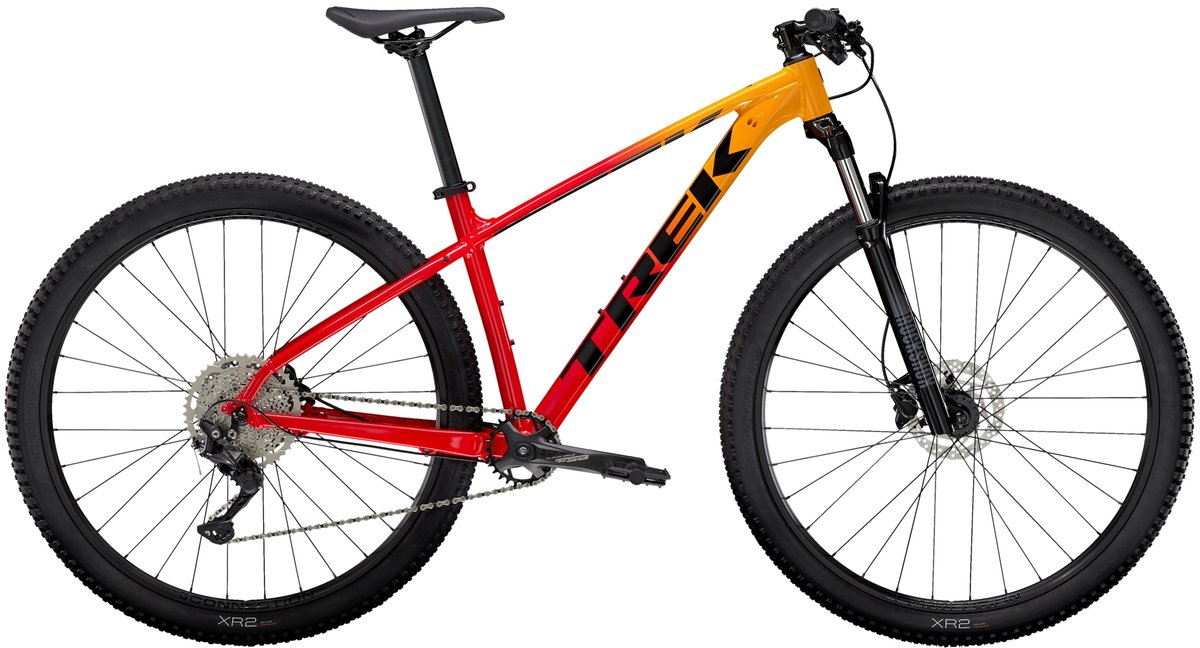
Once you get into the $1000 plus range the Roscoe bikes take over. You'll gain a better hydraulic disc brake, much upgraded drive-train and a much more durable and higher performance front shock & mid-fat tire. At $1150 the Roscoe 6 is value packed with great features. This is a good price point to look at that will get you a solid bike to start mountain biking with.
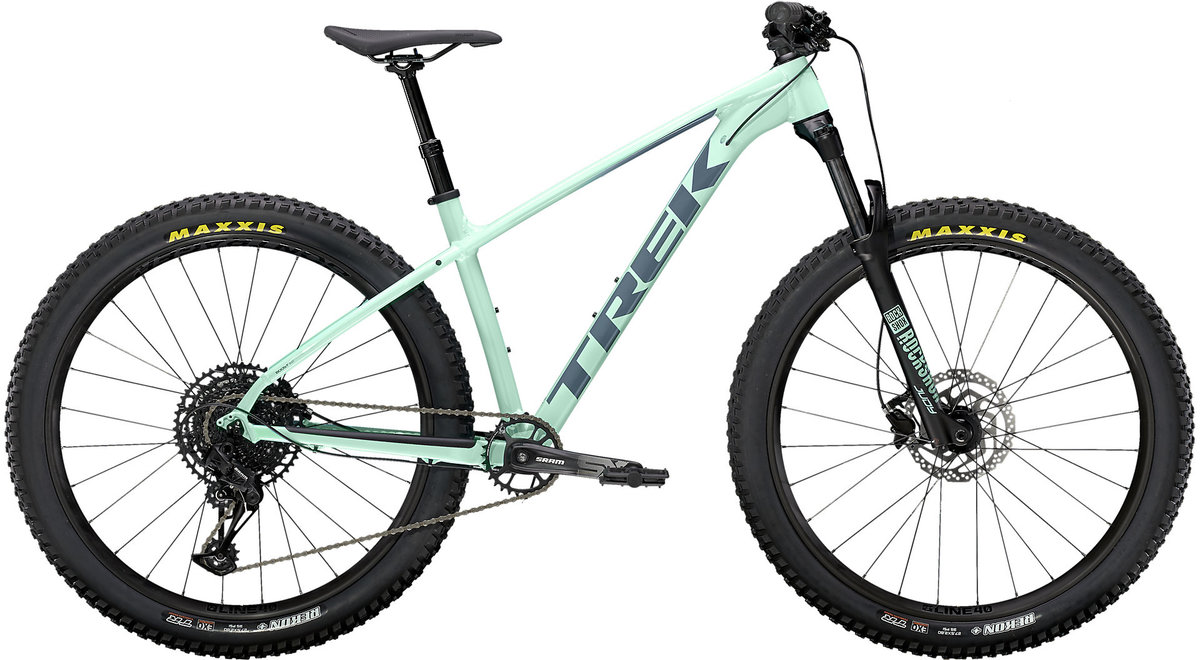
If you're looking to get more adventurous and get into dual suspension bikes you'll be starting at a plus $1500.00 price point. To really get into the "meat & potatoes" of dually bikes we suggest spending around $2500.00. Here you'll get a higher level of components, wheels & suspension. Check out this video below breaking down the differences and their best uses.
The Trek Fuel and Top Fuel bikes represent some of the best value dual suspension mountain bikes money can buy!
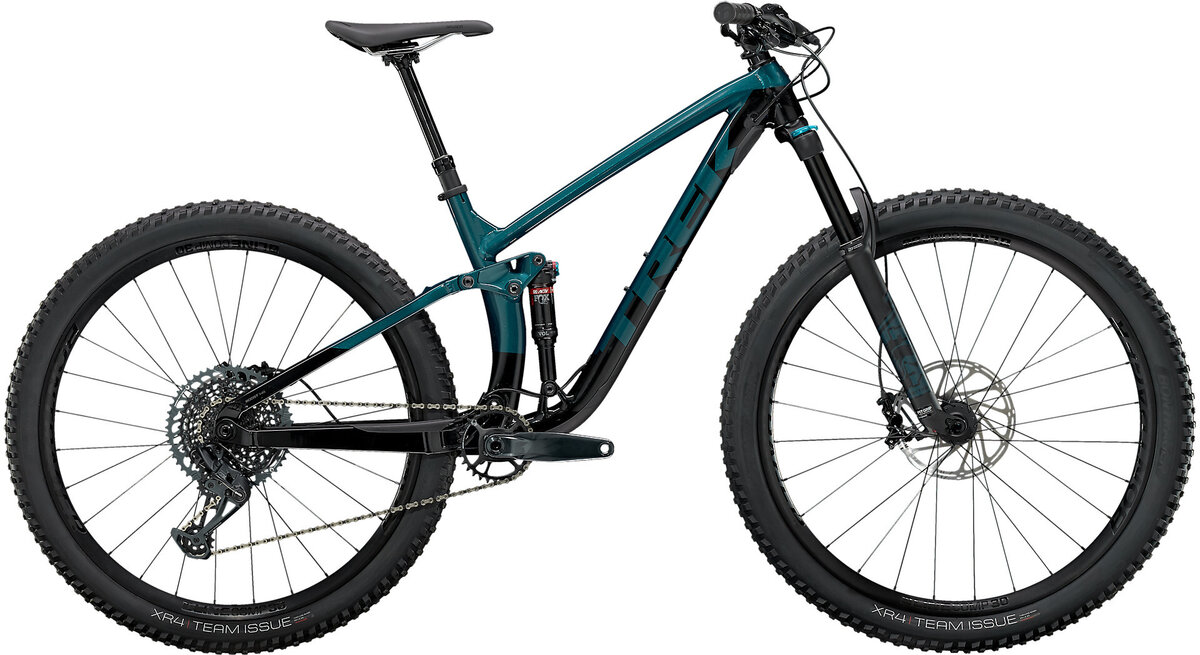
What do I need to start mountain biking?
Once you have picked out your new rig you'll want to go accessory shopping, these items will make your riding experience much safer and enjoyable.
- Bike Helmet (must have) $50 - $150
- Riding Gloves (must have) $30 - $50
- Hydration (must have) $20 - $150
- Floor Pump (must have) $40 - $100
- Flat Repair / Mini Pump & Tools (must have) $50 - $100
- Cycling Shoes & Clipless Pedals (optional) $150 - $300
- Assorted Bike Clothing (optional) TBD
- Bike Lights (optional - must have at night) $50 - $300
#2 - Where will you go shopping for your bike?
When you begin the shopping process most folks will likely start searching the internet for a mountain bike buyer's guide and suggestions as well as product reviews and videos.
These are all useful resources from a basic information standpoint but nothing beats talking to an expert at your local bike shop.
At the shop you'll be able to ask questions directly to a staff member who rides and get a direct answer from them.
Ask Questions such as...
- What frame size should I be riding?
- What are the different types of mountain bikes?
- Should you buy a cross country bike, or a bike designed more for downhill or enduro style riding?
- What wheel size would they suggest?
- What features they would suggest based on your intended use.
- A suggested price range based on the question above. (this will effect what type of bike you'll want to look at - hardtail vs. dual suspension etc.)
- What bike do they ride? And why?
- How did they start mountain biking?
- Why can't you just go to a big box store to save some money?
(there are many reasons why you should not keep Big Box Stores as an option - serious safety concerns being the main one!!)
**Talking to a trained expert & rider at your local bike shop is the biggest resource you have as someone looking to get into mountain biking!!
#3 - Do you have a brand in mind?
Many folks get overwhelmed while doing their research as to what brands to look at.
At Dedham Bike we are huge fans of Trek Mountain Bikes & Cannondale Mountain bikes but we are also the first to admit that there are several other great bike brands out there.
No one company can be the best at everything all the time.
All the major brands are making really good bikes right now, no one brand is the best!
Today's beginner mountain bikes (under $2500) are incredible values for the amount of bike you receive even at the most entry level prices, in fact the value has never been higher!
We will help you decide which bike is best for you knowing that the bike we will suggest is a very high quality product & a great value!
We partner with brands that produce very high quality products but are also winners behind the scenes in regards to service & communication.
What really matters most is where you buy your bike!
You Bought Your New Mountain Bike - Now What?
Congrats on getting your new bike!!
Now you're probably wondering what do I do now?
What should I do on my first off road ride to make it as fun as possibe?
Find a Ride
Some folks think that because there are no peaks on the horizon, they can't really "mountain bike." Actually, every American is close to off-road riding. It may be dirt roads instead of mountainous singletrack, yet the thrills are the same. Look here for some great ways to find riding trails near you.
If your local bike shop sells mountain bikes, chances are good that the employees ride the local trails and know where to send you. Buy a county map, take it to the shop, and have someone mark the best spots. As you discover more, mark those, too.
Be Safe
Because mountain bike trail systems are often off the beaten track, we recommend riding with friends. If something goes wrong, you'll have help or someone who can get help. It's also important to carry energy food in case you tire. And, carry tools and a spare tube and patch kit to handle basic repairs. Of course, you should always wear a helmet, too. And, it's not a bad idea to pack a cell phone if you have one.
Knowing the area helps, too. If you're not familiar with the trails, ask ride partners what to watch for: Are there poisonous plants to avoid? Biting insects? Slippery roots or hidden ruts? Wildlife concerns? Being prepared before you hit the trail is the best way to avoid danger.
Another important point is to always ride within your limits. Take it easy and don't try to ride parts of the trail that scare you. It's better to walk a challenging section than to risk crashing. In time, as you learn to ride over different terrain, you'll ride more and walk less. But, at the outset, listen to the voice of reason rather than the urgings of your ego.
If you need more help here's a list of trail rules for you to learn and follow.
Check Your Bike For Safety
Before hitting the woods, make sure that your bike is in tip-top mechanical condition. The brakes should be working perfectly. The chain and derailleurs should be lubricated and adjusted properly. And, your suspension system should be set to your weight and riding style so that it offers control and comfort.
If you're using toe clips and straps or clipless pedals, make sure you can get in and out quickly. That way, you'll be able to get your feet down if you stall out suddenly on a steep hill or over an obstacle.
Also, avoid the common mistake of riding off road with too much tire pressure. While it's best to inflate tires hard for road use, softer pressures offer more control, traction and comfort on the trails (35 to 45 psi is right for most riders).
Easy On The Brakes
On your first off-road rides, you'll probably feel most comfortable riding the brakes to control your speed. Keep in mind, however, that you don't want to brake so much that you lose all your momentum. It's always easier to ride over a rough stretch or a slight hill if you bring some speed into it. Not too much -- just enough to sustain your balance.
If you're squeezing the brakes too often or with too much force you'll be rocking from side to side, planting one foot or the other and not getting into the rhythm of the ride. Worse, applying the brakes too much can lead to skidding and a loss of control. Plus it creates unnecessary wear on your bike and the trails.
Practice braking and learn to lightly apply the brakes only when needed to slow down or stop. Mountain-bike brakes are powerful and they can stop you extremely quickly when you need them to. So, when the trail's safe relax your hands and enjoy the ride.
Relax And Move Around
Two techniques for skillful off-road riding are relaxation and changing your body position. If you can release the tension from your upper body as you ride, you'll be able to react more quickly to changes in the terrain and you'll be less likely to overreact when faced with a tricky or dangerous section. Keep your shoulders, neck and hands nice and relaxed and take occasional deep breaths to remain calm.
It's also important to move around on the bike as the trail changes to get your weight in the right position for optimum handling. For example, if you remain in the saddle when riding down a steep hill, your weight will be too far forward. If you apply the front brake too hard or hit a bump with your rear wheel, you might take a trip over the handlebars. You can eliminate this possibility by standing slightly (remain crouched) and moving your body so that your butt is actually behind the seat. With your weight properly shifted rearward, there's no way you'll go over the bars.
Similarly, when climbing steep hills, it helps to lean forward so that the front wheel doesn't pop up. With a little practice, these movements will become instinctive and you'll do them automatically.
Practice
Expert mountain bikers got that way by practicing. To improve your skills, you should, too. A great way to do this is riding with friends and stopping to practice on difficult sections. This way, you can try to ride it while your friend spots for you. And she can watch and see what you're doing and recommend different approaches.
You can also learn by watching better riders. When you're out on the trail, stop and observe how others ride over obstacles that give you trouble. You can also ask people how to ride the section. Mountain bikers are a friendly bunch and they'll be happy to give you some tips and advice.
Well, the world is your oyster as they say...
A mountain bike can go anywhere you can pedal it really!
But what you really want to do is go riding in the woods right?
Do you know where your local mountain bike trails are?
If you're like most folks you probably don't know where to go to find the local trails.
- Here's a few tips on how to find off road trails near you.
- A great place to start is by asking the shop guys where you bought your bike where their favorite riding spots are.
- We have compliled a listing of local trails around Dedham and Boston.
- Join a local trail advocacy association like NEMBA or IMBA - Two great resources for local trail maps etc.
- A Couple More Things
- Try and hook up with a local group ride that fits your fitness and skill level - don't be afraid to jump in with a crew that is a bit above your level from time to time - it's a great way to become a better rider!
- Above all be safe: Wear that helmet - hydrate - bring your phone - let someone know where you are riding if you're solo!!
- NOW GO HAVE FUN!
All Of This Begs The Question - How Will You Ride?
Thanks To Trek Bikes For This Rad Video!

